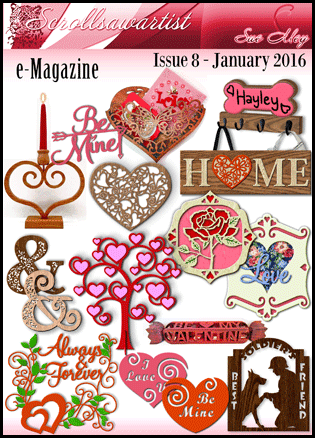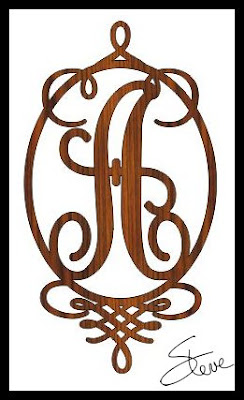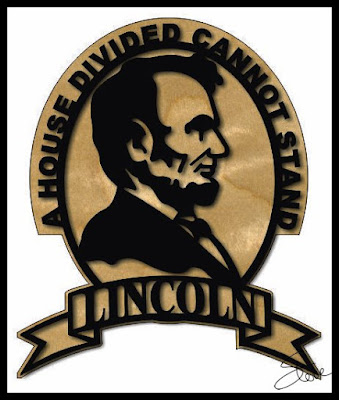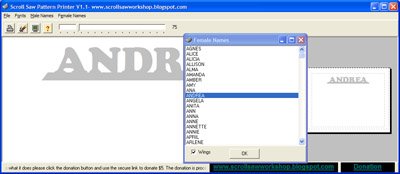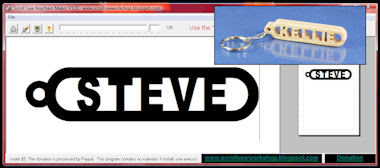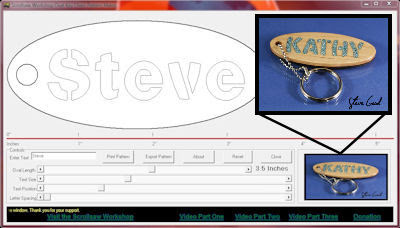It's been a long time since I talked about scroll saw blades here on the blog. It's one of the more common questions I get in my daily email. If you are new to the scroll saw then you are probably trying to figure out the best blade to use for a given project.
I'm not going to go into depth here tonight but since I have had the question a few times this week I thought I give it a quick mention.
There are several different brands and types of scroll saw blades. It can be confusing and you will get as many different opinions about which blade to use as there are blades.
The first thing you will probably notice is there are pin end blades and plain end blades. This choice is easy. You want to purchase plain end blades. Not all saws are made to accept plain end blades but if yours does then that's what you need. Pin end blades are for very basic scroll work. You can get a plain end blade through much smaller interior entry holes which allows finer fretwork. If you saw only takes pin end blades there are sometimes conversion kits that allow the use of plain end blades. If that is not the case for your saw then don't give up. There are many projects that can be made with pin end blades. you just have to be more careful in the patterns you choose.
Okay now you are shopping for plain end blades. You notice there are two types. Spiral and straight cut blades. The vast majority of fine fretwork is done with straight cut blades. There are people who will beg to differ with this but trust me when I say it's easier to learn to use a straight cut blade. Some patterns, for example portrait style patterns are better cut with a spiral blade. Sometime if you are cutting a very large project the spiral blade is the only choice because you don't have to turn the board when using the spiral blade. It cuts in every direction.
Now you are ready to purchase some straight cut blades and there are all these numbers and letters on the package. What do they mean? #1, #3, #5, scroll reverse, skip tooth etc. Let me make it easy for you. I cut 95% of my projects with these three blades. A #3
scroll reverse and a #5
scroll reverse. After that I occasionally use a #7
scroll reverse for thicker or more dense woods. That's it. I own some of just about every type of blade made but those three blades get the job done most of the time.
The other 5% of the time I may use some of the specialty blades. For example I use blades intended for jig saw puzzles when I'm cutting a puzzle. I use a spiral when I cut a portrait. The rare time when I'm cutting thin metal I'll use a metal cutting blade.
My suggestion if you are just getting started is to buy some #3, #5 and #7 scroll reverse blades. If you want to try the spirals then buy a few of them. Practice with these blades. After you have some experience start adding other types of blades to your collection and see what works well for you.
There are charts out there that will give recommendations for which blade to use for a certain thickness and hardness of wood. Those are fine but just remember they are just recommendations. Sometimes you have to break the rules.
When it comes to brands I use Flying Dutchman blades. I also like Pegas blades and Olsen brand blades are usable but I think they are a slight step down from the other two. The blades that come with the saw when you take it out of the box are usually throw always. Do yourself a favor and buy quality blades before you make your first cut.
This has been a very basic introduction to scroll saw blades. There are many variables that go into each blade when it is manufactured. If you have the interest then by all means do your research and learn what all the specs mean. Just don't get so wrapped up in blades that you don't get started cutting projects. The best thing you can do to become a better scroll saw user is to cut projects. You will learn more from one hour of cutting than you will from 3 hours of reading.
All this is just my opinion from 30 plus years of running a scroll saw. If your opinion is different, I say great. It's about the project that comes off the saw and not the machine or technique. I have seen some beautiful work come off a $70 scroll saw using pin end blades. Just saying.
 The Scrollsaw Workshop is primarily supported by donations. If you enjoy this Blog and would like to make a donation please click this link. Your support is greatly appreciated.
Make A Donation
The Scrollsaw Workshop is primarily supported by donations. If you enjoy this Blog and would like to make a donation please click this link. Your support is greatly appreciated.
Make A Donation
Each digital book is available for download immediately after payment.
The books are $12 per edition and contains eight unique patterns each.
Click now and make a family heirloom this weekend.
If you would like to have all the patterns in the Scrollsaw Workshop catalog you can buy the first six years
DVD and the 2013 update DVD at this link. DVD #1 is $20 and contains over 1,100 patterns. The 2013 update DVD is $7.50 and has another 178 patterns. The 2014 update DVD is $7.50 and has another 223 patterns.





















